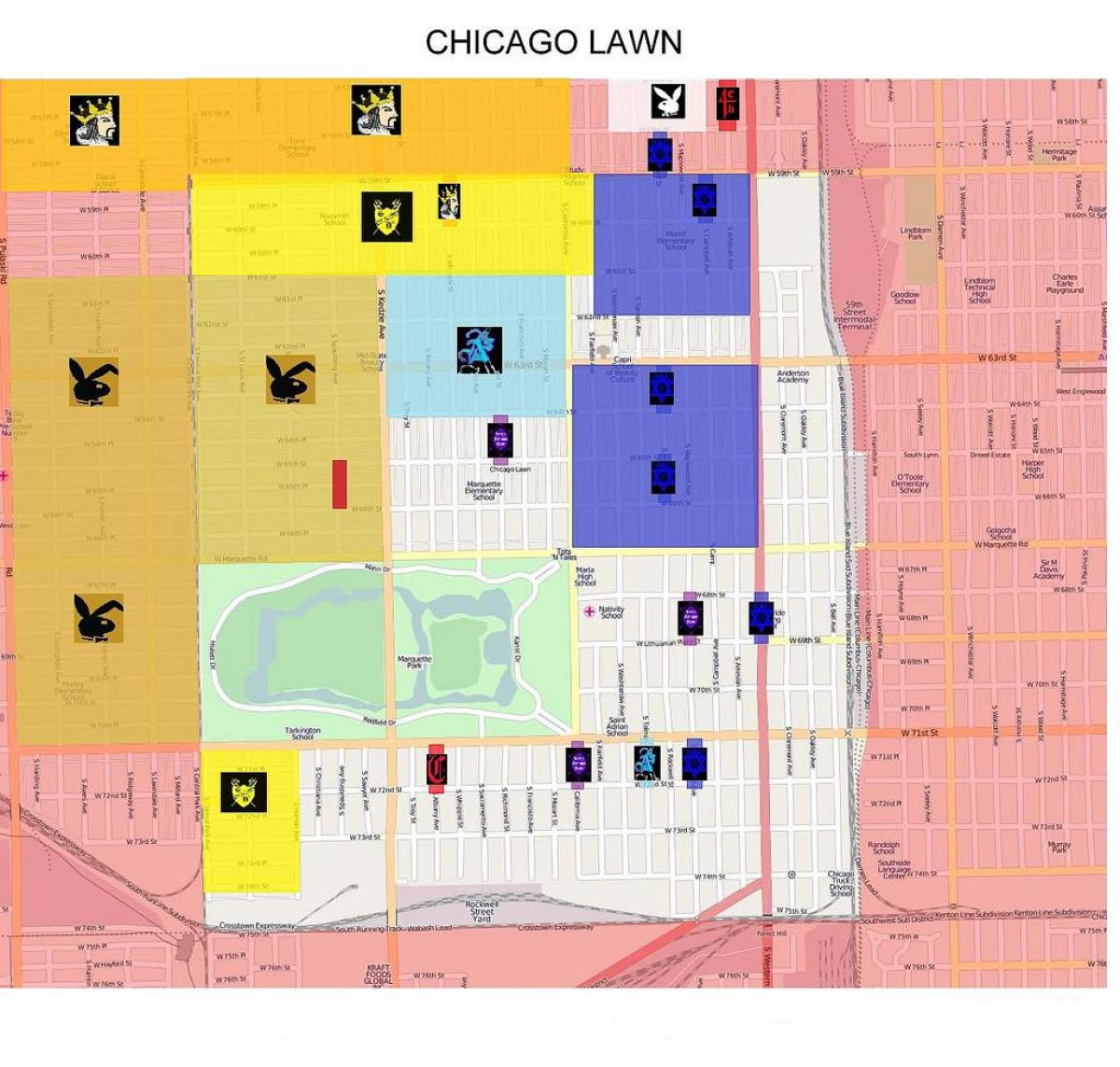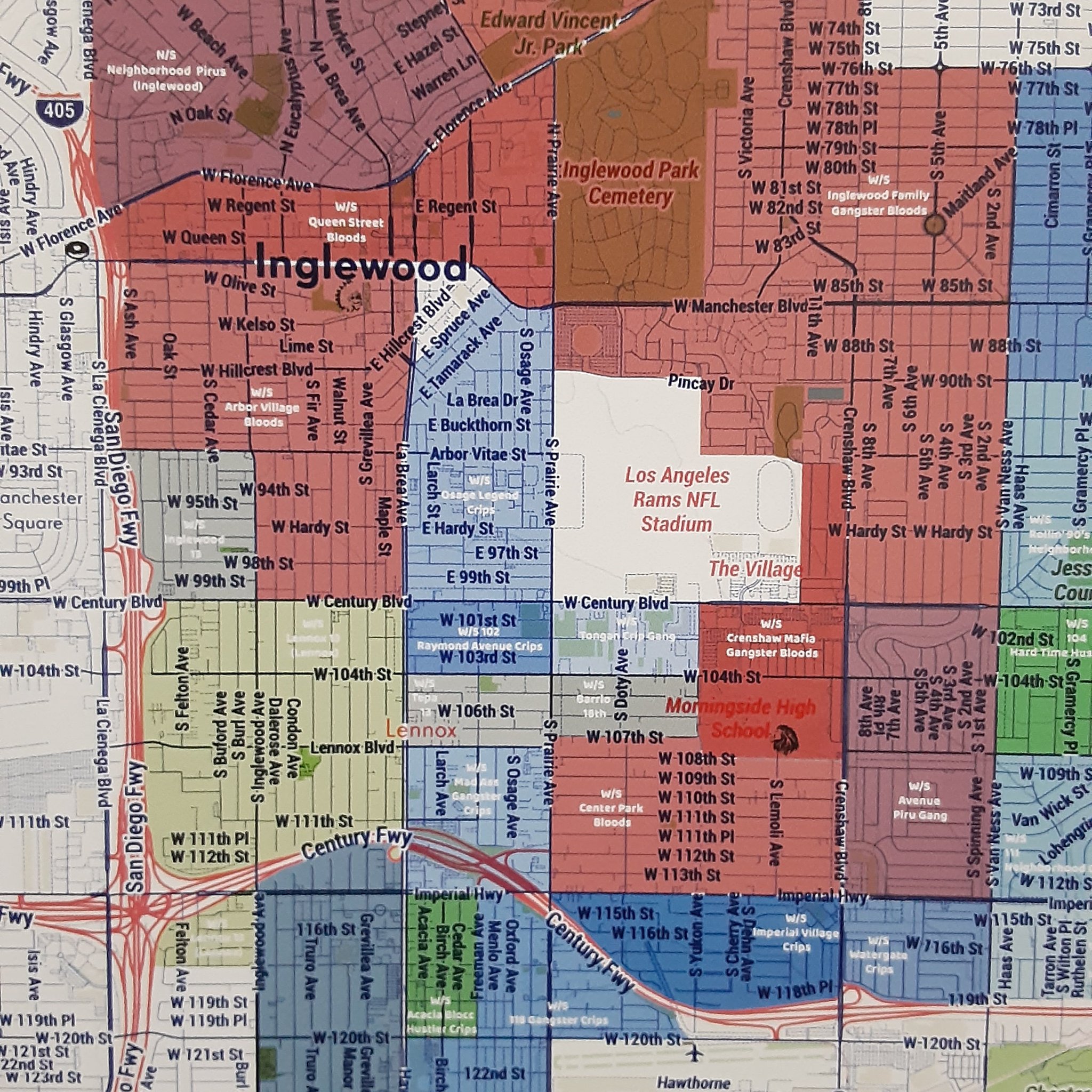Imagine this: You're walking down a dimly lit street, and suddenly you notice graffiti on the walls, symbols that seem to tell a story you don’t fully understand. Welcome to the world of gang maps. These aren’t your ordinary maps; they’re blueprints of power, control, and sometimes even danger. Gang maps are more than just lines on a paper—they’re the unseen rules that shape urban landscapes.
Gang maps have become a crucial topic in urban sociology, law enforcement, and community safety discussions. They’re not just about marking territories; they’re a reflection of societal issues, economic disparities, and cultural influences. If you’ve ever wondered how gangs carve out their spaces and why it matters, this article’s got you covered. We’re diving deep into the world of gang maps, breaking down what they mean and why they’re important.
But here’s the thing—this isn’t just about gangs. It’s about understanding the complexities of modern cities, the hidden layers beneath the streets we walk every day. So, whether you’re a curious citizen, a student of sociology, or someone looking to enhance community safety, this guide is your ticket to understanding gang maps like never before. Let’s get started!
Read also:Matthew Settle And Kelly Rutherford The Story Of Love Challenges And Success
Table of Contents
How Gangs Use Maps to Establish Territory
Understanding Gang Map Symbols
Law Enforcement’s Perspective on Gang Maps
Read also:Legendary Love Cannon The Ultimate Guide To Understanding This Iconic Phenomenon
The Impact of Gang Maps on Communities
Tools and Technology in Mapping Gang Territories
Conclusion: Taking Action Against Gang Violence
What Are Gang Maps?
Gang maps are essentially visual representations of gang territories. Think of them as a hidden layer of the cityscape, where lines are drawn not with ink but with influence, power, and sometimes fear. These maps are used by gangs to mark their areas of control, often using graffiti, street signs, and even specific landmarks. But it’s not just about marking territory—it’s about asserting dominance and maintaining order within their ranks.
So, how do these maps work? Well, they’re not your average Google Maps. Gang maps are more like codes, filled with symbols, colors, and patterns that only insiders truly understand. And while they might seem chaotic to an outsider, there’s a method to the madness. Gang maps are a crucial tool for both gangs and those trying to understand them, like law enforcement agencies and social scientists.
Why Study Gang Maps?
Studying gang maps isn’t just about curiosity—it’s about safety. By understanding how gangs operate and how they define their territories, we can better address the root causes of gang violence and work towards creating safer communities. It’s like solving a puzzle, where each piece represents a different aspect of gang culture and its impact on society.
The History of Gang Maps
Gang maps have been around for as long as gangs themselves. Back in the day, they were more about word of mouth and physical markings. But as technology advanced, so did the methods of mapping. Today, with the help of GPS and digital tools, gang maps have become more precise and detailed than ever before.
Take, for instance, the early days of street gangs in the 1970s. Back then, maps were rudimentary, often drawn on scraps of paper or etched into walls. Fast forward to today, and you’ve got sophisticated software that can track gang movements and predict potential conflicts. It’s a whole new world, and the evolution of gang maps reflects that.
Key Milestones in Gang Mapping
- 1970s: The rise of street gangs and the first recorded use of physical maps.
- 1990s: Introduction of digital tools in law enforcement for mapping gang territories.
- 2000s: Advanced GIS technology used to create detailed gang maps.
Why Are Gang Maps Important?
Gang maps matter because they provide valuable insights into gang dynamics. They help law enforcement agencies strategize their operations, allocate resources effectively, and prevent potential conflicts. For communities, understanding gang maps can mean the difference between safety and danger.
But here’s the kicker—gang maps aren’t just about law enforcement. They’re also about education and awareness. By knowing where gangs operate and why, we can work towards addressing the underlying issues that lead to gang formation in the first place. It’s about breaking the cycle, not just reacting to it.
Key Benefits of Understanding Gang Maps
- Improved community safety through better resource allocation.
- Enhanced law enforcement strategies and operations.
- Increased awareness and education about gang-related issues.
How Gangs Use Maps to Establish Territory
Gangs use maps in a variety of ways to establish and maintain their territories. It’s not just about drawing lines on a map—it’s about creating a sense of ownership and control. Gangs use symbols, colors, and even specific landmarks to mark their areas, often reinforcing these boundaries with graffiti and other visual cues.
But it’s not all about intimidation. Gangs also use maps to communicate with each other, ensuring that everyone knows their place in the hierarchy. It’s like a hidden language, where each symbol and color tells a story. And while it might seem chaotic, there’s a strict code of conduct that governs these territories.
Key Strategies Used by Gangs
- Using graffiti and symbols to mark territory.
- Establishing clear boundaries through visual cues.
- Communicating internally through map-based systems.
Understanding Gang Map Symbols
Gang map symbols are like a secret code, filled with meaning and significance. Each symbol represents something different, from gang allegiance to specific activities. For instance, a star might represent leadership, while a skull might signify danger. These symbols are crucial for understanding gang dynamics and predicting potential conflicts.
But decoding these symbols isn’t easy. It requires a deep understanding of gang culture and history. That’s why law enforcement agencies and social scientists spend years studying these symbols, piecing together the puzzle one piece at a time.
Common Gang Map Symbols
- Stars: Often represent leadership or hierarchy within a gang.
- Skulls: Typically signify danger or conflict zones.
- Crosses: Can represent alliances or truces between gangs.
Law Enforcement’s Perspective on Gang Maps
For law enforcement, gang maps are a crucial tool in their arsenal. They help officers understand gang dynamics, predict potential conflicts, and allocate resources effectively. But it’s not just about mapping—it’s about strategy. By understanding how gangs operate, law enforcement can develop more effective strategies to combat gang violence and protect communities.
And while technology has made mapping easier, there’s still a human element that can’t be ignored. Officers on the ground often have the best insights into gang territories, using their knowledge and experience to enhance digital maps and create a more comprehensive picture of gang activity.
Key Challenges for Law Enforcement
- Keeping maps up-to-date as gang territories shift.
- Understanding the cultural and historical context of gang symbols.
- Developing strategies that address the root causes of gang violence.
The Impact of Gang Maps on Communities
Gang maps have a profound impact on communities, shaping how people move and interact within urban spaces. For residents living in gang-controlled areas, these maps can mean the difference between safety and danger. But it’s not just about fear—it’s about understanding and empowerment.
By knowing where gangs operate and why, communities can take proactive steps to address the issues that lead to gang formation. It’s about breaking the cycle of violence and creating safer, more inclusive spaces for everyone.
Ways Communities Can Respond
- Engaging in community policing initiatives.
- Providing education and awareness programs about gang-related issues.
- Encouraging community-led efforts to reclaim public spaces.
Gang Maps in Pop Culture
Gang maps have also made their way into pop culture, often depicted in movies, TV shows, and music. Think of films like "Boyz n the Hood" or "Straight Outta Compton," where gang territories play a central role in the narrative. These depictions, while sometimes exaggerated, provide valuable insights into gang culture and its impact on society.
But it’s not just about entertainment. Pop culture can also educate and raise awareness about gang-related issues, sparking important conversations about safety, equality, and justice. It’s about using the power of media to create change.
Tools and Technology in Mapping Gang Territories
Technology has revolutionized the way we map gang territories, providing law enforcement and researchers with powerful tools to track and analyze gang activity. From GIS software to social media analytics, the tools available today are more advanced than ever before.
But with great power comes great responsibility. It’s important to use these tools ethically and responsibly, ensuring that they’re used to enhance safety and not infringe on individual rights. It’s a delicate balance, but one that’s crucial for creating safer communities.
Key Technologies Used in Gang Mapping
- GIS Software: Used to create detailed maps of gang territories.
- Social Media Analytics: Helps track gang activity and predict potential conflicts.
- Mobile Apps: Provide real-time updates on gang-related incidents and safety alerts.
The Future of Gang Maps
The future of gang maps is both exciting and challenging. As technology continues to evolve, so will the methods of mapping gang territories. But it’s not just about technology—it’s about people. The real challenge lies in using these tools to create safer, more inclusive communities for everyone.
So, what does the future hold? We’ll likely see more advanced tools, greater collaboration between law enforcement and communities, and a deeper understanding of gang dynamics. But the ultimate goal remains the same: to break the cycle of violence and create a safer world for future generations.
Conclusion: Taking Action Against Gang Violence
In conclusion, gang maps are more than just lines on a paper—they’re a reflection of our society and its challenges. By understanding how gangs operate and why they form, we can take proactive steps to address the root causes of gang violence and create safer communities.
So, what can you do? Start by educating yourself and others about gang-related issues. Engage in community-led initiatives and support efforts to reclaim public spaces. And most importantly, advocate for policies that address the underlying issues that lead to gang formation.
Together, we can make a difference. Let’s take action today and create a safer, more inclusive world for everyone. Share this article, leave a comment, and let’s keep the conversation going. The future is in our hands!


